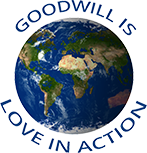A New Science of Life Rupert Sheldrake (Icon Books, London, 2009)
A New Science of Life is a fully revised edition of the controversial science classic published in 1981. The unsolved problems of biology have still not been explained by conventional research, making Sheldrake's thesis more relevant than ever. A New Science of Life outlines a radical new model of science and re-evaluates our view of genetic inheritance. Rupert Sheldrake argues that phenomena become more probable the more often they occur. Individual plants and animals draw upon and contribute to the collective memory of their species. Even crystals depend on a kind of memory. When chemists crystallize new chemicals in one part of the world, they become easier to crystallize elsewhere. Sheldrake sees these processes as examples of morphic resonance. He explains how past forms and activities of organisms can influence organisms in the present through direct connections across time and space.
Agenda for a New Economy – From Phantom Wealth to Real Wealth David C. Korten (Berrett-Koehler, San Francisco, 2009)
In this timely book, David Korten sets out a radical agenda for reforming economics which significantly decreases its reliance on the financial sector. While written from an American perspective, the book’s arguments are universally applicable. He draws a distinction between a ‘Wall Street’ economy and a ‘Main Street’ economy, and claims that the former is based almost exclusively on the generation of phantom wealth, money created out of nothing as loans by financial institutions, which is then further manipulated through complex financial instruments, with the chief purpose of enriching those companies and individuals who can afford to deal in them. He cites the current credit crunch as evidence of the total failure of this model, and contrasts phantom wealth with real wealth, i.e. the real products and services that human beings need to maintain a healthy life, together with the mutual bonds of trust and care that build communities and families. He sets out a twelve point plan for the transition from a ‘Wall Street’ to a ‘Main Street’ economy, a transition which he acknowledges may be painful, but which he believes is necessary if we are to end a way of life that is destructive of communities, the environment, and ultimately humanity itself. He concludes with guidelines for participation in the worldwide movement which is seeking to make the needed changes.
